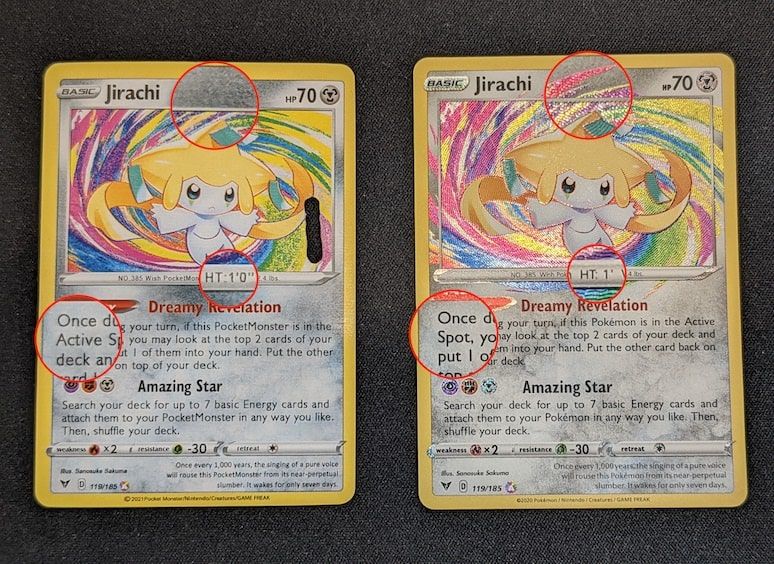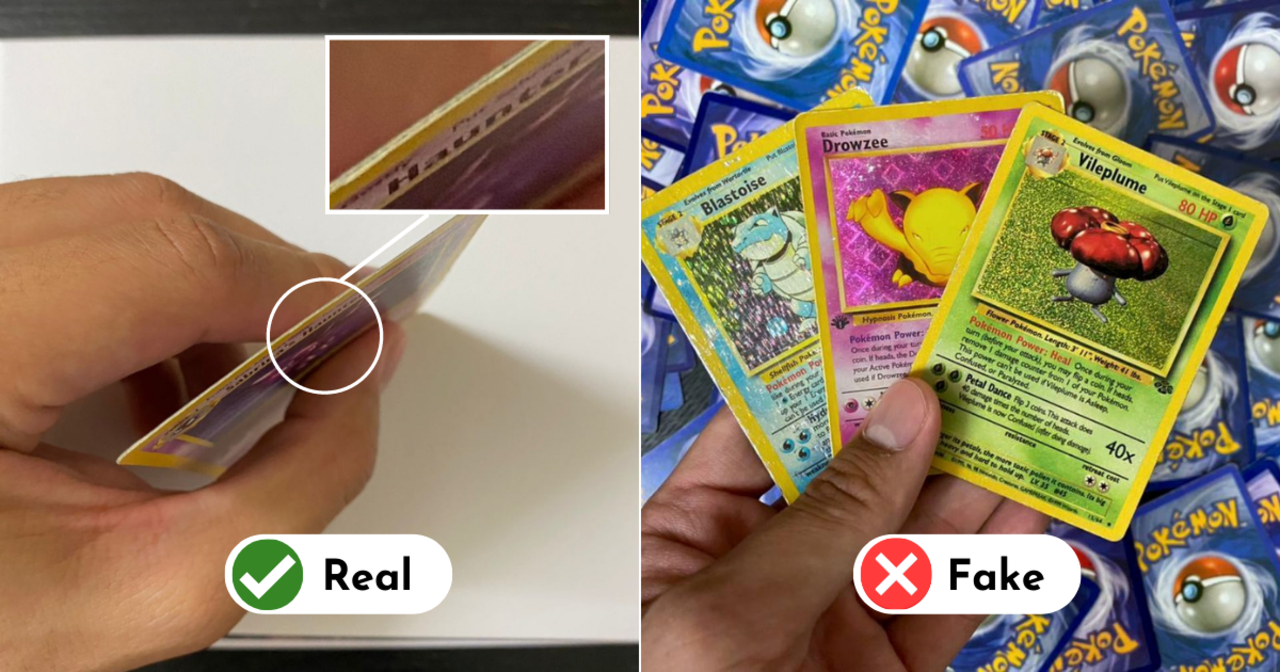How do I know if Pokemon cards are real?。 ここで視聴してください – How can you tell if Pokémon cards are real
Fake cards often have wrong spellings. Common mistakes among them including spelling the Pokémon names incorrectly, having no accent i.e. " ` " sign on the 'e' of 'Pokémon' , etc. You may also see the cards spelling the attacks inaccurately, and not having any energy signs under the attack for the attack description.Authentic Japanese Pokemon cards have sharp, clear printing and vibrant colors that are consistent throughout the card. On the other hand, fake cards may have blurry or pixelated printing, and the colors may be faded or inconsistent. You may also notice that fake cards feel flimsier than their authentic counterparts.Rare. If a Pokémon card's rarity symbol is a black or white star, it's at least a Rare. Check if any parts of the card have a holographic foil. If no part of the card is foil, or if every part of the card except the art is foil, then it's a normal Rare.
Scan Pokémon cards instantly with Dragon Shield! Quick translations and real-time market prices at your fingertips. Dragon Shield is the premier companion for Pokémon Trading Card Game enthusiasts.
What does a fake Pokemon card look like
Fake cards are often poorly produced and tend to have a much lower print quality than a real card. Colors often come through as overly dark, blues will often become muted or even purplish, the print of the card itself may even look like it has an almost fabric-like pattern in it.
Are McDonald’s Pokémon cards real
McDonald's brought back its Pokémon Trading Card Game promotion, featuring cards from the Paldea region introduced with Pokémon Scarlet and Violet. Some of the cards have a special holofoil pattern unique to McDonald's.For those who enter Pokémon TCG tournaments, the only way to legally use Japanese Pokémon TCG cards in tournaments is by crafting an entire deck of Japanese cards. Current official Pokémon TCG tournament rules state that every card in a deck must be in the same language.
Japanese cards are often more budget-friendly, with booster boxes for newer sets costing around $50. These cards typically have a better print quality than the English versions, making them even more appealing to collectors. Aside from the booster box effect, Japanese cards are often easier to grade.
Are Japanese Pokémon cards worth more
The cards found in the best Japanese Pokémon sets can often be more valuable than their English counterparts, including unique cards that never received an English release. Japanese booster packs also offer different drop rates, which may improve your odds of finding an ultra-rare card.Therefore, buying, selling, or distributing fake Pokémon cards is considered copyright infringement and is a violation of intellectual property laws. In addition to copyright infringement, owning or trading fake Pokémon cards could also be considered fraud, especially if you try to pass them off as authentic cards.Printing or selling fake cards is a violation of The Pokémon Company's trademark, but that's not the only reason they're bad for Pokémon fans. Since they can't be sold or played in official events, counterfeit Pokémon cards are basically worthless. Their only purpose is to help scammers trick fans out of their money.
Look for things such as the wrong font, misspelled or otherwise wrong words, absurd amounts of HP( for example, if a Diglett has 3000 HP), and wrong colors. Usually fake cards have a lighter shade of blue on the back than the blue ones.
Illustrator Pikachu
A truly one-of-a-kind card, the population 1 PSA 10 Illustrator Pikachu was bought by YouTube influencer Logan Paul in 2022 at a valuation of $5.275 million dollars, making it the most expensive Pokémon card ever sold. More specifically, he paid $4 million in cash plus a PSA 9 Illustrator Pikachu he previously owned.
Are McDonald's Pokémon cards worth anything Yes, these cards have value due to their rarity and nostalgic appeal. These limited-edition cards stem from various collaborations between the Pokémon Company and McDonald's and often celebrate special events, such as the 25th Pokémon Anniversary.
Why is Pokémon banned in Japan
Notably, the globally banned episode "Dennō Senshi Porygon", which aired only once on Japan's TV Tokyo on December 16, 1997, features a series of rapidly alternating red and blue frames that provoked epileptic seizures in hundreds of children.
Saudi Arabia
In 2001, the Grand Mufti [ https://en.wikipedia.org/wiki/Grand_Mufti ] of Saudi Arabia [ https://en.wikipedia.org/wiki/Saudi_Arabia ], who is the highest religious authority in the kingdom, issued a fatwā [ https://en.wikipedia.org/wiki/fatw%C4%81 ] banning the Pokémon franchise, claiming it encourages gambling and …Hareruya 2 store manager Sho Watanabe explained that the decision to create the kid-friendly sale section was made for more accessible Pokémon cards to children to prevent resellers from buying up all the stock.







